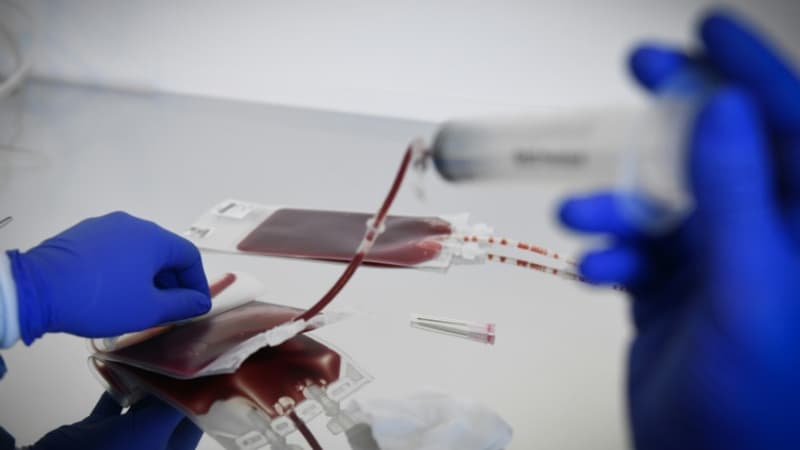The goal: “to give everyone the best chance of recovery.” The Biomedicine Agency launched this Monday its new annual campaign for the donation of bone marrow, a substance found inside the bones and part of which produces blood cells, according to the National Cancer Institute. In 2022, more than 38,000 people registered to donate their bone marrow, up from fewer than 24,000 in 2021, according to the Biomedicine Agency.
This public establishment, in charge of managing these registries, explains on its website that “bone marrow transplantation is necessary in certain serious blood diseases such as leukaemia.”
A “very altruistic” act
This is how Fabienne lived it, who learned in 2018 that she had acute myelogenous leukemia, a blood cancer. “Immediately, the doctors are very clear: the leukemia that I have is one of the leukemias that has a poor prognosis,” she tells BFMTV.
“They explain to me that I will have four months of intensive chemotherapy but, whatever happens, I will have to undergo a bone marrow transplant to recover,” adds the school teacher.
Thanks to a matched donor in England, he benefited from a bone marrow transplant in March 2019: “It makes me feel like I have a little brother I’ll never meet, but who has done something very selfless.”
Today, Fabienne points out that her donor “might very well never have entered this registry” and is “infinitely grateful.”
Looking for young representatives of diversity
In a press release published at the beginning of April, the Biomedicine Agency announces that this year it intends to “prioritarily target men between the ages of 18 and 35, representative of diversity.”
“We need to find the person who is the most compatible. That is why we need very diverse profiles”, the Agency’s general director, Marine Jeantet, develops with BFMTV.
To become a potential donor, you must be between the ages of 18 and 35 when you sign up for the list; however, you can remain registered and make a donation until you are 60 years old. You also must not be affected by certain health problems, such as a heart condition or back and back problems (the full list is available here). A saliva or blood sample is taken at the end of the recording to identify compatibility with another patient.
You can be on the record and not be called right away: Antoine tells BFMTV, for example, that he waited more than 14 years before being called. When a match has been identified, bone marrow donation can be done in different ways: by blood, which is the most common, or by puncture in the posterior bones of the pelvis. “Carried out in a person in perfect health, bone marrow donation does not present any particular risk,” says the Biomedicine Agency on its site dedicated to this type of donation.
Source: BFM TV


